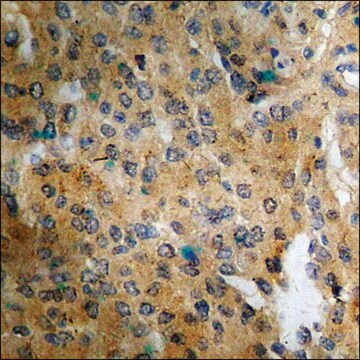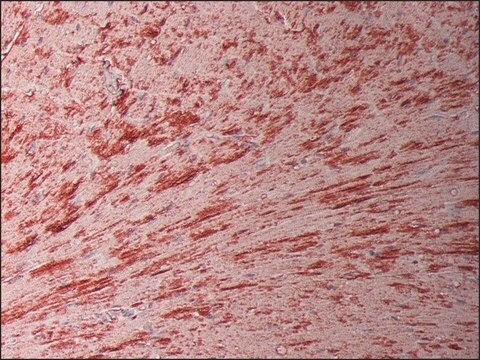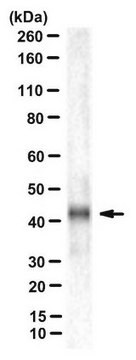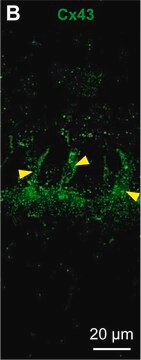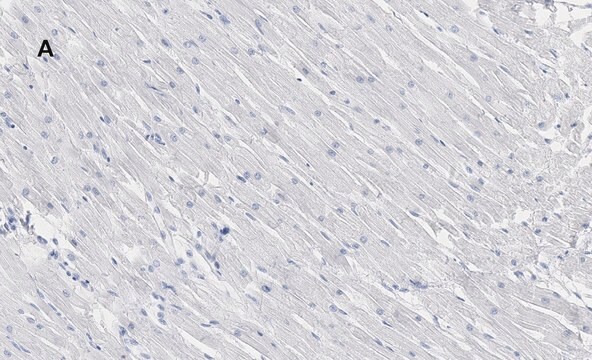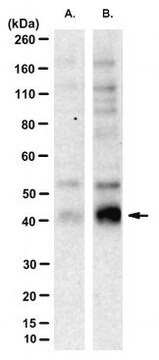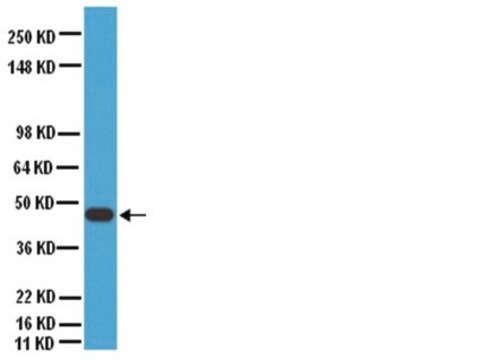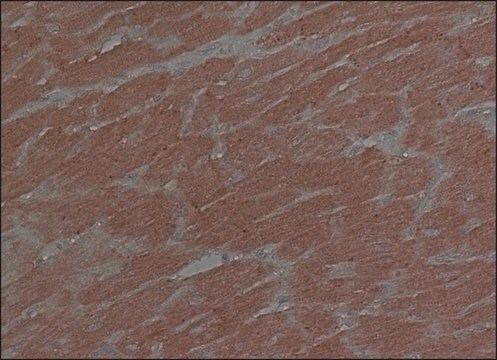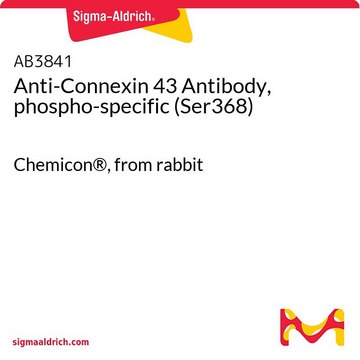MAB3067
Anti-Connexin 43 Antibody
CHEMICON®, mouse monoclonal, 4E6.2
Synonim(y):
Gap junction 43 kDa heart protein, connexin 43, gap junction protein, alpha 1, 43kDa, gap junction protein, alpha 1, 43kDa (connexin 43), gap junction protein, alpha-like
About This Item
Polecane produkty
Nazwa produktu
Anti-Connexin 43 Antibody, clone 4E6.2, clone 4E6.2, Chemicon®, from mouse
pochodzenie biologiczne
mouse
Poziom jakości
forma przeciwciała
purified immunoglobulin
rodzaj przeciwciała
primary antibodies
klon
4E6.2, monoclonal
reaktywność gatunkowa
mouse, rat, pig, canine
reaktywność gatunkowa (przewidywana na podstawie homologii)
human
producent / nazwa handlowa
Chemicon®
metody
ELISA: suitable
immunocytochemistry: suitable
immunohistochemistry: suitable
western blot: suitable
izotyp
IgG1
numer dostępu NCBI
numer dostępu UniProt
Warunki transportu
wet ice
docelowa modyfikacja potranslacyjna
unmodified
informacje o genach
human ... GJA1(2697)
Opis ogólny
Specyficzność
Immunogen
Zastosowanie
Cell Structure
Adhesion (CAMs)
1:1000-10,000 freshly prepared lysates, proteinase inhibitors are recommended. Recognizes proteins of molecular weight 43-47 kDa on Western blots of mouse brain lysate.
Immunocytochemistry:
A 1:50-1:250 dilution of a previous lot was used in immunocytochemistry.
Immunohistochemistry:
A previous lot was used to detect Connexin 43 expression in the keratinocytes of the middle and upper epidermal layers of frozen human skin tissue (Arita, Ken, et al. (2006). Am. J. Pathol. 169:416-423).
Immunohistochemistry:
A previous lot was used to detect Connexin 43 expression in human and rat heart tissue (1:500 dilution).
ELISA:
A previous lot of this antibody was used in ELISA.
Optimal working dilutions must be determined by end user.
Jakość
Western Blot Analysis:
1:1000 dilution of this antibody detected Connexin 43 on 10 μg of rat brain lysates
Opis wartości docelowych
Postać fizyczna
Przechowywanie i stabilność
Komentarz do analizy
Mouse brain tissue lysate
Inne uwagi
Informacje prawne
Oświadczenie o zrzeczeniu się odpowiedzialności
Nie możesz znaleźć właściwego produktu?
Wypróbuj nasz Narzędzie selektora produktów.
polecane
Kod klasy składowania
12 - Non Combustible Liquids
Klasa zagrożenia wodnego (WGK)
WGK 2
Temperatura zapłonu (°F)
Not applicable
Temperatura zapłonu (°C)
Not applicable
Certyfikaty analizy (CoA)
Poszukaj Certyfikaty analizy (CoA), wpisując numer partii/serii produktów. Numery serii i partii można znaleźć na etykiecie produktu po słowach „seria” lub „partia”.
Masz już ten produkt?
Dokumenty związane z niedawno zakupionymi produktami zostały zamieszczone w Bibliotece dokumentów.
Nasz zespół naukowców ma doświadczenie we wszystkich obszarach badań, w tym w naukach przyrodniczych, materiałoznawstwie, syntezie chemicznej, chromatografii, analityce i wielu innych dziedzinach.
Skontaktuj się z zespołem ds. pomocy technicznej